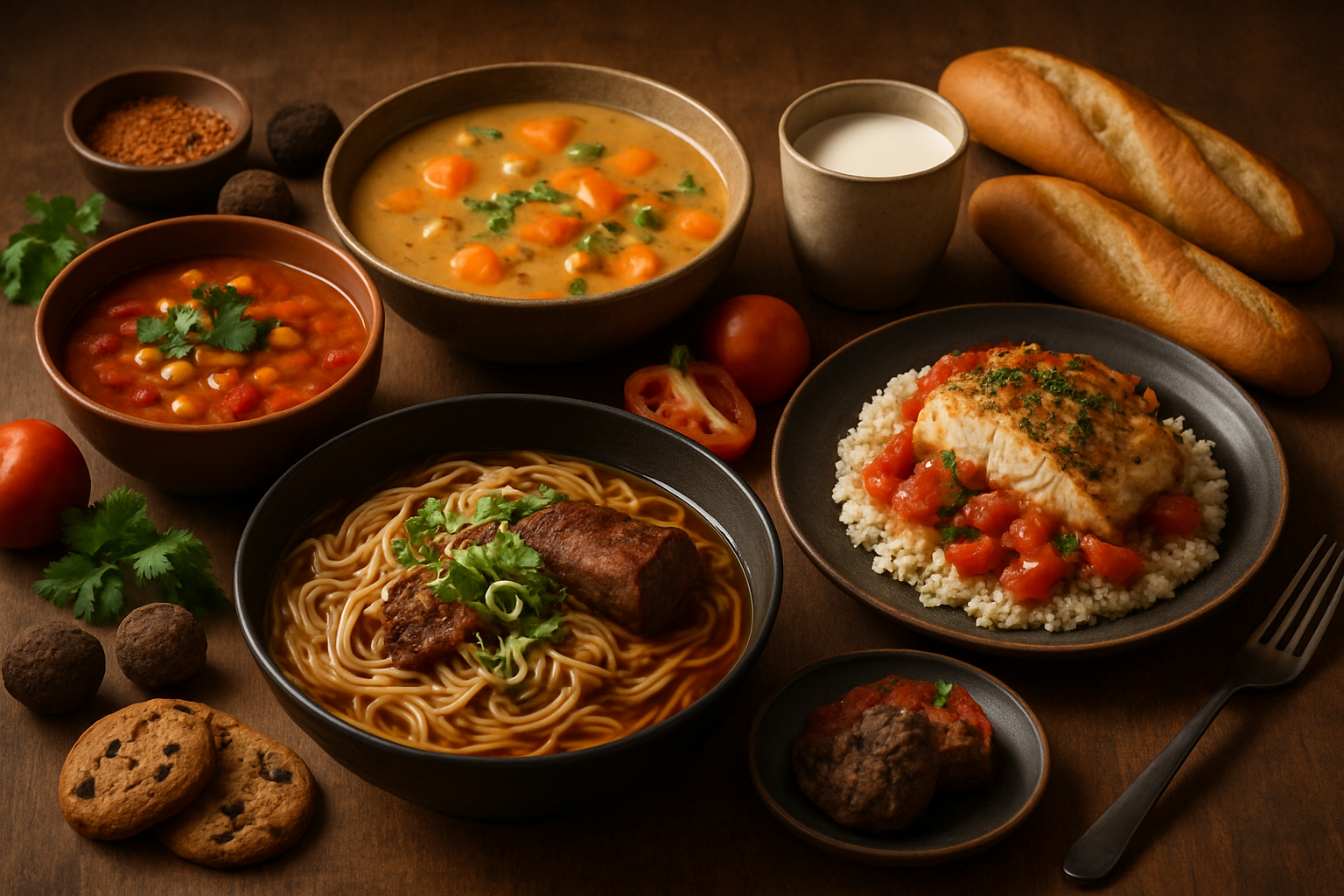Culinary Alchemy: Transforming Leftovers into Gourmet Delights
Breathe new life into yesterday's meals with innovative techniques that turn humble leftovers into mouthwatering masterpieces. This culinary adventure explores creative ways to elevate forgotten fridge finds, reducing food waste while tantalizing your taste buds. Get ready to reimagine your approach to leftovers and unlock a world of flavor possibilities.

Texture Transformation Techniques
One of the biggest challenges with leftovers is maintaining or improving texture. Fortunately, there are several techniques to address this issue. For vegetables that have lost their crunch, try quick-pickling them in a vinegar solution to add a tangy bite. Leftover pasta can be revitalized by pan-frying until crispy, then using it as a base for a frittata. Transform soggy breaded items like chicken tenders or fish sticks by crushing them into crumbs and using them as a flavorful coating for fresh proteins. Another great technique is to incorporate leftovers into crispy croquettes or fritters – mix with eggs, breadcrumbs, and herbs, then fry until golden. These methods not only improve texture but also introduce new flavors and presentations that make the dish feel entirely new.
Fusion Flavor Makeovers
Injecting global flavors into leftover dishes is a surefire way to create exciting new meals. Take inspiration from various cuisines to reimagine your leftovers. Transform leftover roast chicken into a spicy Thai larb salad by mixing it with lime juice, fish sauce, chili, and fresh herbs. Turn yesterday’s mashed potatoes into Indian-inspired aloo tikki patties by adding spices like cumin, coriander, and garam masala. Leftover grilled vegetables can find new life in a Middle Eastern-style wrap with hummus and za’atar seasoning. By thinking globally, you can create fusion dishes that are far more exciting than the original meals, introducing your palate to new flavor combinations and culinary traditions.
Liquid Gold: Transforming Leftovers into Soups and Sauces
Soups and sauces are excellent vehicles for repurposing leftovers, offering a way to blend flavors and create cohesive new dishes. Start by creating a flavorful base with aromatics like onions, garlic, and celery, then add your leftovers and appropriate liquid (broth, cream, or even coconut milk). Blend smooth for a velvety soup or leave chunky for a hearty stew. Leftover roasted vegetables can become a luxurious bisque, while remnants of a Sunday roast are perfect for a rustic farmhouse soup. For sauces, puree leftover vegetables with herbs and olive oil for a vibrant pesto, or blend roasted meats with tomatoes and spices for a rich pasta sauce. These liquid transformations not only use up leftovers but also create versatile bases for future meals.
Sweet Endings: Desserts from Savory Leftovers
Don’t limit your leftover creativity to savory dishes – even unexpected ingredients can find new life in sweet treats. Leftover mashed potatoes can be transformed into tender potato doughnuts or incorporated into a moist chocolate cake. Cooked rice is the perfect base for a creamy rice pudding, while stale bread makes excellent bread pudding or French toast. Even vegetables can cross over to the sweet side: carrot cake is a classic example, but consider trying zucchini bread or sweet potato pie. By thinking outside the box and balancing flavors carefully, you can create surprising and delightful desserts that make use of a wide range of leftovers, reducing waste while satisfying your sweet tooth.
Useful Tips for Leftover Transformation
• Always store leftovers properly to maintain freshness and safety
• Label containers with contents and dates to keep track of your inventory
• Plan your transformations based on the age of the leftovers, using older items first
• Keep a well-stocked pantry with versatile ingredients to aid in leftover makeovers
• Don’t be afraid to mix and match leftovers from different meals
• Use herbs, spices, and condiments to completely change the flavor profile of a dish
• Consider texture when reheating – use methods that crisp or caramelize when appropriate
• Invest in quality storage containers to extend the life of your leftovers
• Learn basic sauce-making techniques to create new dishes from leftover proteins and vegetables
• Practice safe food handling and reheating to prevent foodborne illness
Transforming leftovers is a culinary skill that combines creativity, resourcefulness, and a dash of kitchen magic. By mastering these techniques, you’ll not only reduce food waste but also expand your culinary repertoire and surprise your taste buds with exciting new flavors. Embrace the challenge of leftover makeovers, and you’ll find that last night’s dinner can become tomorrow’s gourmet delight. Let your imagination run wild in the kitchen, and turn every meal into an opportunity for delicious reinvention.




